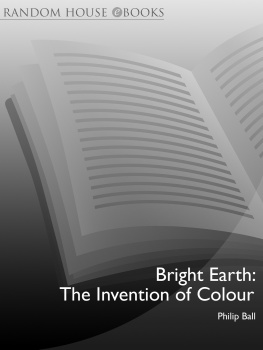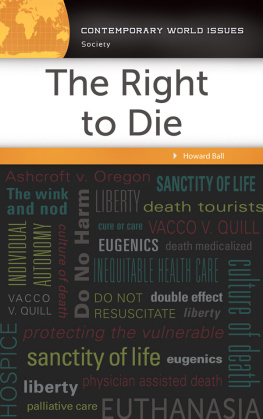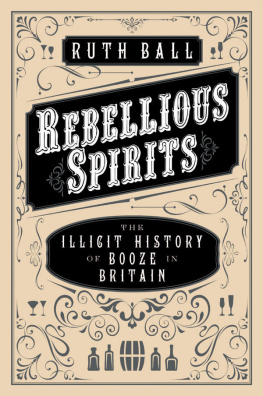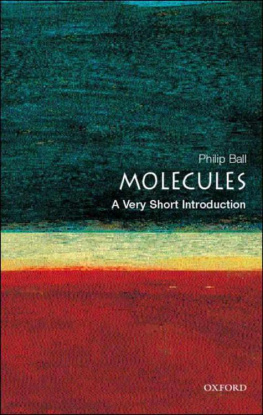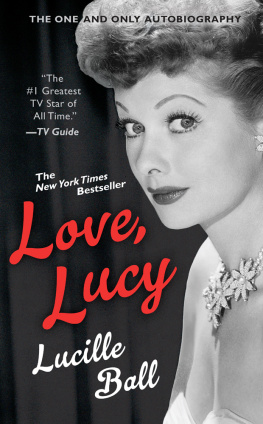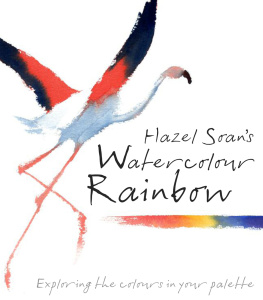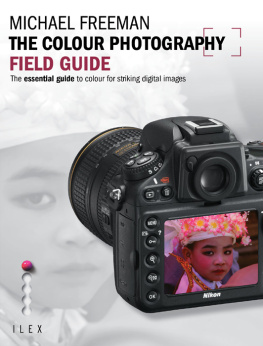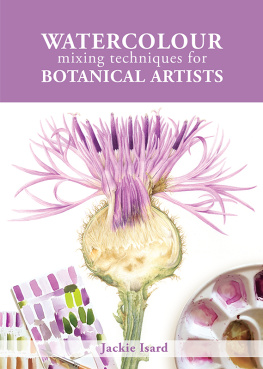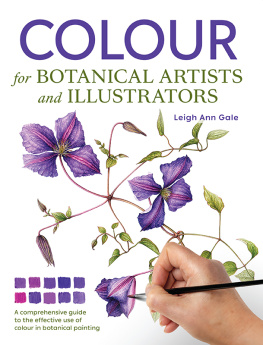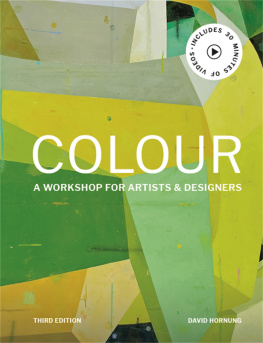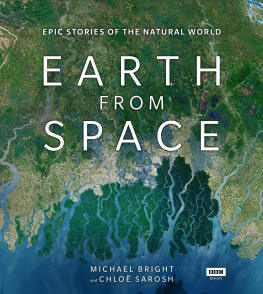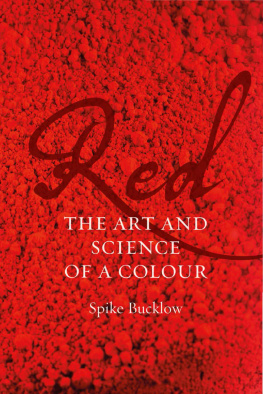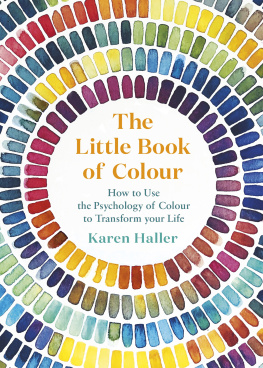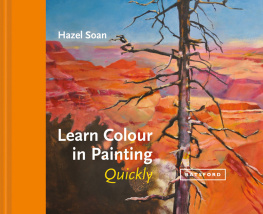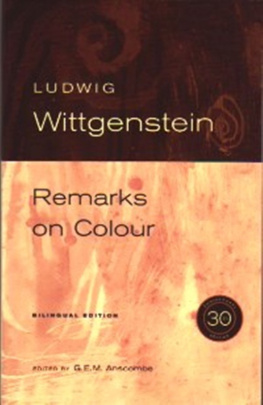Contents
About the Book
Colour in art as in life is both inspiring and uplifting, but where does it come from? How have artists found new hues, and how have these influenced their work? Beginning with the ancients when just a handful of pigments made up the artists palette and charting the discoveries and developments that have led to the many splendoured rainbow of modern paints, Bright Earth brings the story of colour spectacularly alive. Packed with anecdotes about lucky accidents and hapless misfortunes in the quests for new colours, it provides an entertaining and fascinating new perspective on the science of art.
About the Author
Philip Ball is a freelance writer and a consultant editor for the worlds leading science journal Nature. He is a regular commentator on the interactions between science, art, history and culture. His previous books include Bright Earth: The Invention of Colour, H2O: A Biography of Water and Critical Mass: How One Thing Leads To Another, which won the 2005 Aventis Prize for Science Books. He lives in London with his wife and daughter.
ALSO BY PHILIP BALL
The Devils Doctor: Paracelus and the World of Renaissance Magic and Science
Elegant Solutions: Ten Beautiful Experiments in Chemistry
Critical Mass: How One Thing Leads to Another
The Elements: A Very Short Introduction
Molecules: A Very Short Introduction
H2O: A Biography of Water
The Self-made Tapestry: Pattern Formation in Nature
Made to Measure: New Materials for the 21st Century
Designing the Molecular World: Chemistry at the Frontier
Bright Earth
The Invention of Colour
Philip Ball

Illustrations
Text Figures
How the rainbow is formed
Microscopic ribs on a butterflys wing (Dee Breger, Lamont-Doherty Earth Observatory, New York)
Isaac Newtons colour wheel
Nineteenth-century colour stars
The visual system of the human eye
An alchemist at work
A painter saved by an image of the Virgin Mary (Cantigas de Santa Maria, folio 109r: Patrimonio Nacional, Madrid)
Ogden Roods colour wheel
Synthetic organic colourants
Turas Allegorical Figure, after cleaning but before restoration (National Gallery, London)
A painting illuminated by raking light (Tate Gallery, London)
Ugo da Carpi, Saturn (1604) (Victoria and Albert Museum, London)
A nineteenth-century photographer and the equipment needed to make daguerreotypes
Photographic film
The spectra of printing inks
The colour gamut of TV phosphors, and how to treat colours outside the gamut
Inset Plates
Wassily Kandinsky, Yellow Accompaniment (1924) (Guggenheim Museum, New York)
Michel-Eugne Chevreuls colour wheel (1864)
The CIE chromaticity diagram
Albert Munsells colour atlas (Victoria and Albert Museum, London)
Cave art from Altamira, Spain, dating from c. 15000 BC (Art Resource, New York)
Egyptian faience (c. 1290 BC ) (British Museum, London)
Egyptian wall painting, probably from the tomb of Nebamun (c. 1350 BC ) (British Museum, London)
The Alexander mosaic from the House of the Faun, Pompeii (before AD 79) (Museo Archeologica Nazionale, Naples)
The Villa of Mysteries, Pompeii (c. 50 BC ) (Art Resource, New York)
Attributed to Masaccio and Masolino, Saints Jerome and John the Baptist (c. 14238) (National Gallery, London)
The female painter Thamar, with an assistant (taken from an illuminated manuscript of 1403, ms 12.420, folio 86: Bibliothque Nationale, Paris; Art Resource, New York)
Giotto, the Arena Chapel in Padua (c. 1305) (Art Resource, New York)
The Master of Saint Bartholomew, Saints Peter and Dorothy (c. 150510) (National Gallery, London)
Giovanni del Ponte, The Ascension of St John the Evangelist (c. 141020) (National Gallery, London)
Giotto, The Betrayal of Christ (c. 1305) (Arena Chapel, Padua; Alinari/Art Resource, New York)
Nardo di Cione, St John the Baptist with St John the Evangelist(?) and St James (c. 1365) (National Gallery, London)
Raphael, The Madonna del Granduca (c. 1505) (Palazzo Pitti, Florence; Art Resource, New York)
Jan van Eyck, The Portrait of Giovanni Arnolfini and His Wife (The Arnolfini Marriage) (1434) (National Gallery, London)
Carlo Crivelli, Annunciation, with St Emidius (1486) (National Gallery, London)
Titian, Bacchus and Ariadne (1523) (National Gallery, London)
Titian, Portrait of a Man (c. 1512) (National Gallery, London)
Anthony van Dyck, Equestrian Portrait of Charles I (c. 16378) (National Gallery, London)
Paolo Veronese, Adoration of the Kings (1573) (National Gallery, London)
Tintoretto, St George and the Dragon (c. 1560) (National Gallery, London)
Peter Paul Rubens, Samson and Delilah (c. 1609) (National Gallery, London)
Anthony van Dyck, Charity (c. 16278) (National Gallery, London)
Rembrandt, Portrait of Hendrickje Stoffels (c. 16546) (National Gallery, London)
J. M. W. Turner, Ulysses Deriding Polyphemus (1829) (National Gallery, London)
William Holman Hunt, Valentine Rescuing Sylvia from Proteus (185051) (Birmingham Museums and Art Gallery)
Eugne Delacroix, Algerian Women in Their Apartment (1834) (Louvre, Paris. Photo RMN)
William Holman Hunt, Our English Coasts (later Strayed Sheep) (1852) (Tate Gallery, London)
Claude Monet, Regatta at Argenteuil (1872) (Muse dOrsay, Paris. Photo RMN/H. Lewandowski, S. Hubert; ADAGP, Paris, and DACS, London, 2001)
The Impressionist palette (National Gallery, London)
Claude Monet, Lavacourt under Snow (c. 1879) (National Gallery, London)
Georges Seurat, Sunday Afternoon on the Island of La Grande Jatte (18845) (Art Institute of Chicago)
Paul Czanne, Hillside in Provence (c. 1885) (National Gallery, London)
Paul Srusier, The Talisman (1888) (Muse dOrsay, Paris. Photo RMN/Jean Schormans)
Vincent van Gogh, The Night Caf (1888) (Yale University Art Gallery)
Jan van Eyck, The Virgin with Chancellor Rolin (c. 1437) (Louvre, Paris. Photo RMN/Herv Lewandowski)
Arthur Hughes, April Love (1856) (Tate Gallery, London)
A silk dress from c. 1862 dyed with Perkins mauve (Science Museum/Science & Society Picture Library, London)
Lapis lazuli (Natural History Museum, London)
Duccio, The Virgin and Child with Saints (c. 1315) (National Gallery, London)
Titian, Madonna and Child with Saints John the Baptist and Catherine of Alexandria (c. 1530) (National Gallery, London)
Anish Kapoor, A Wing at the Heart of Things (1990) (National Gallery, London)
Yves Klein, IKB79 (1959) (Tate Gallery, London)
Yves Klein, Ex Voto for the Shrine of St Rita (1961) (Cascia Convent; David Bordes. ADAGP, Paris, and DACS, London)
Titian, Bacchus and Ariadne before cleaning (National Gallery, London)
Cosimo Tura,
Next page
